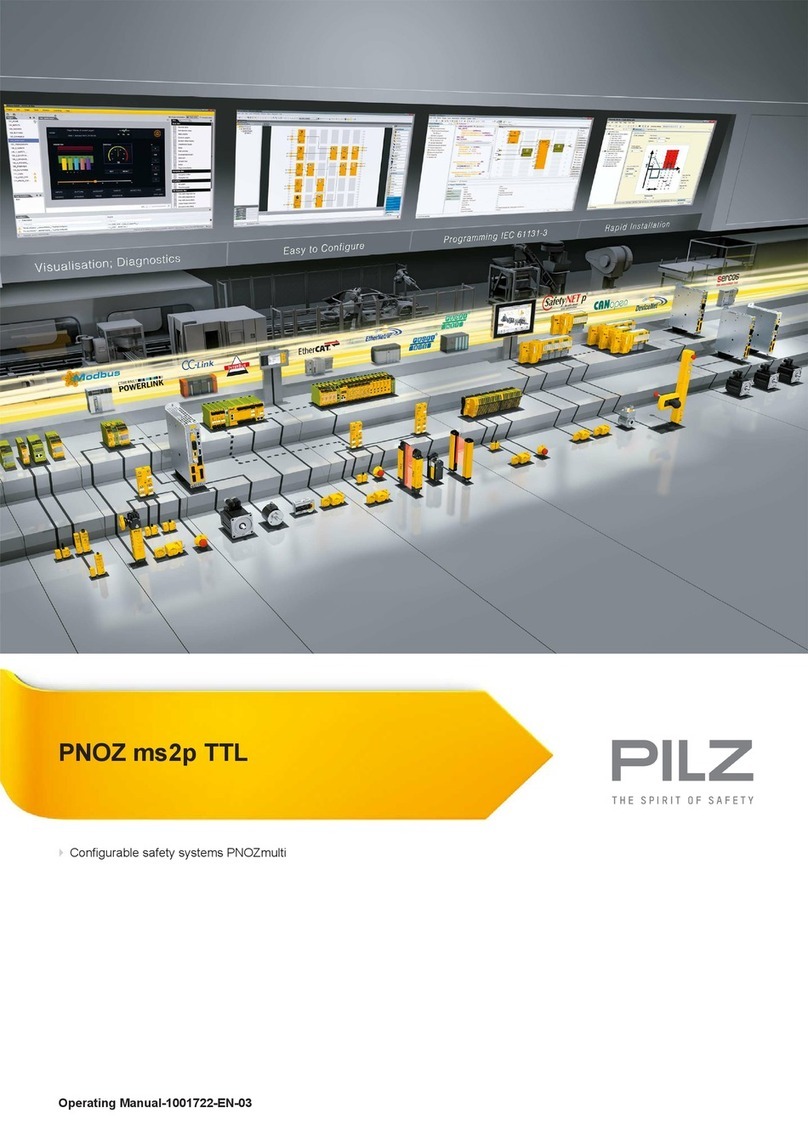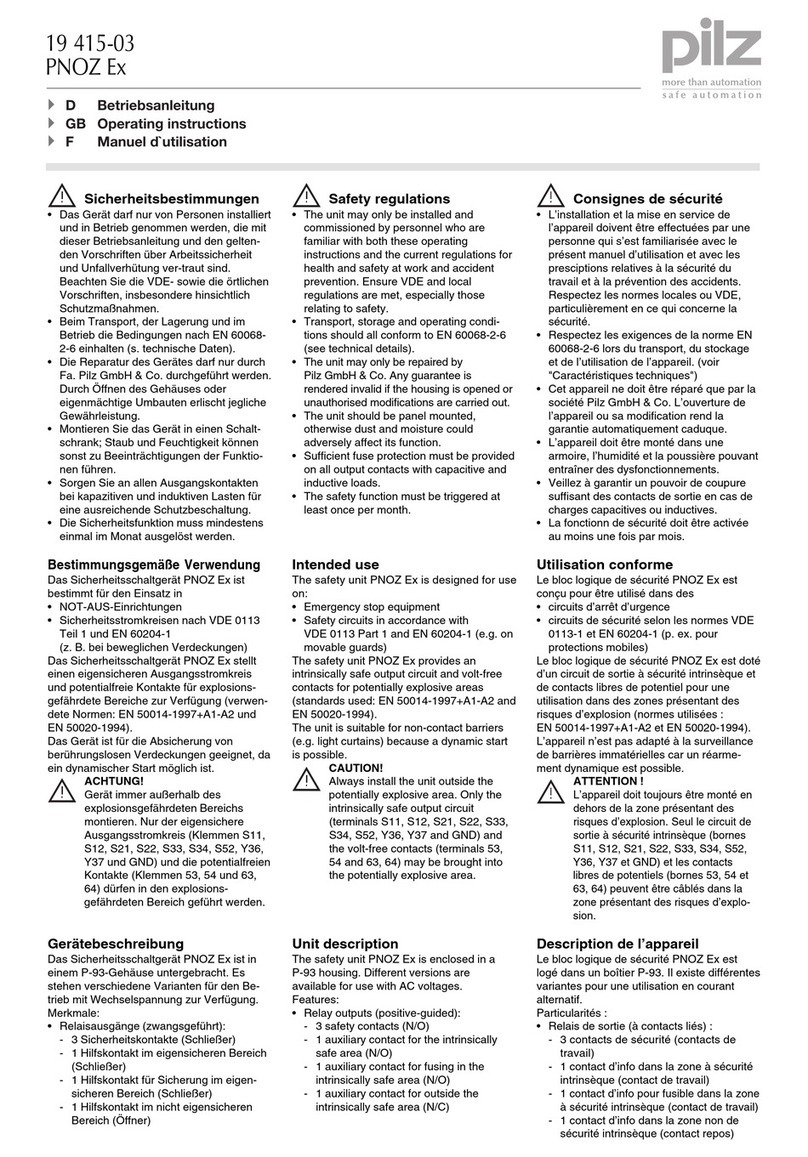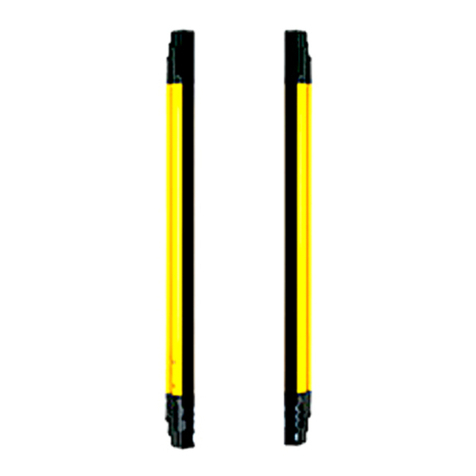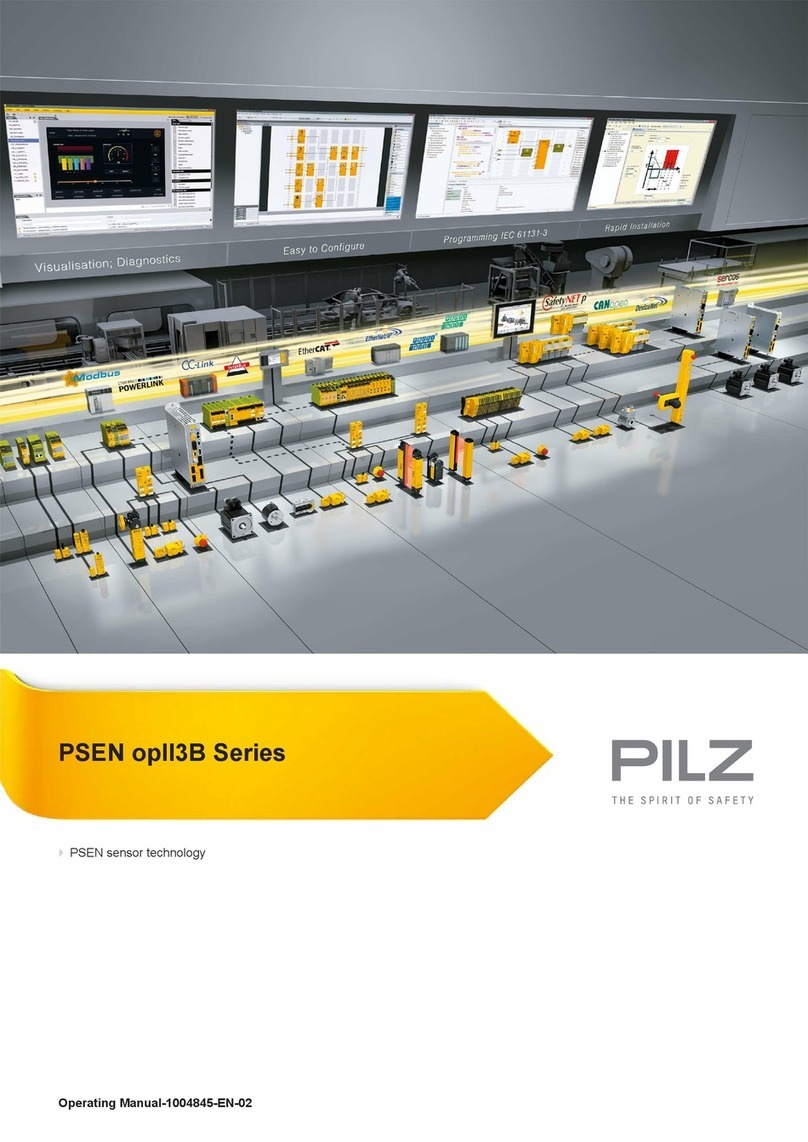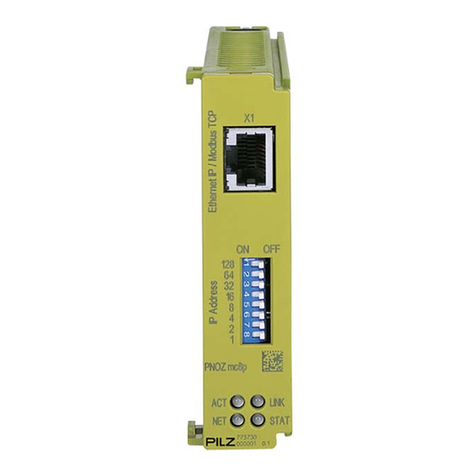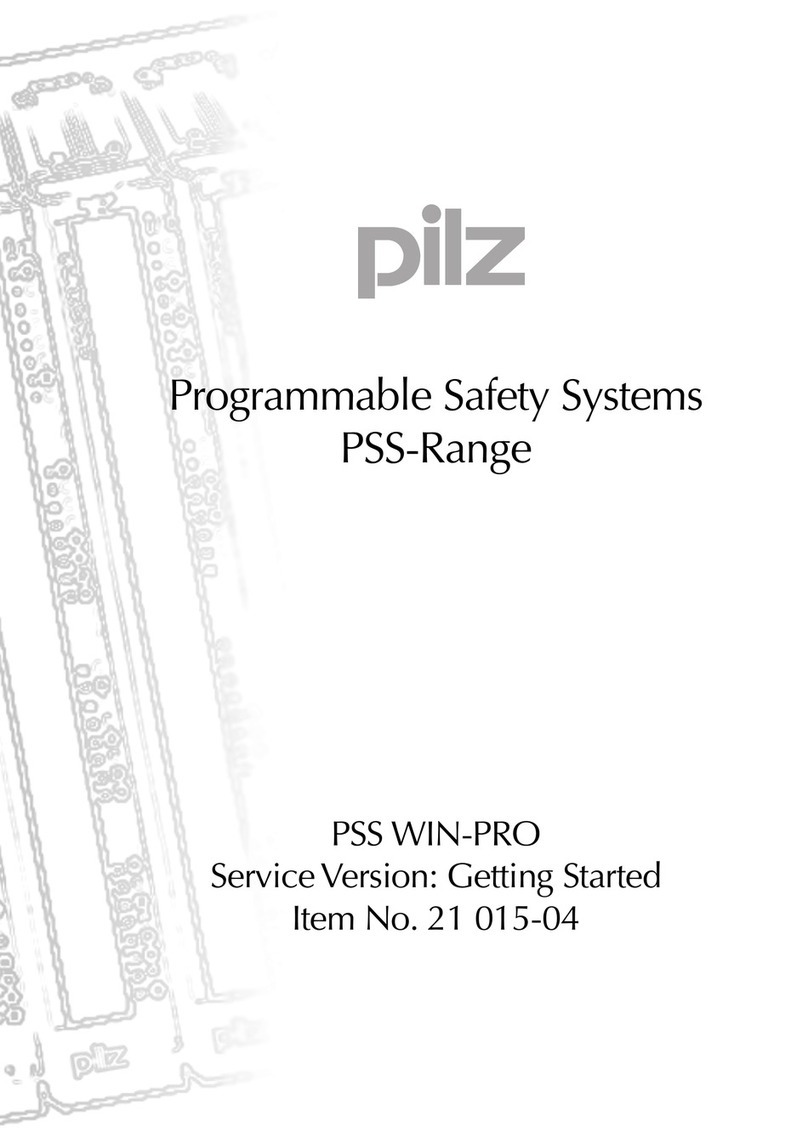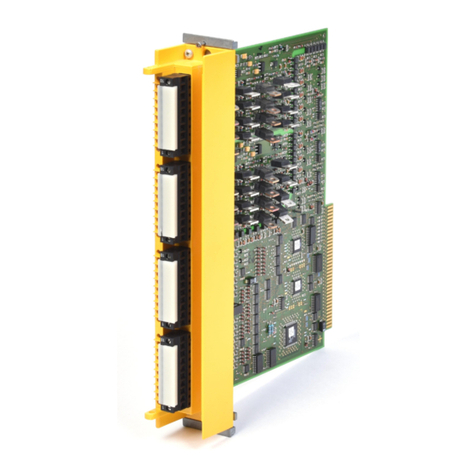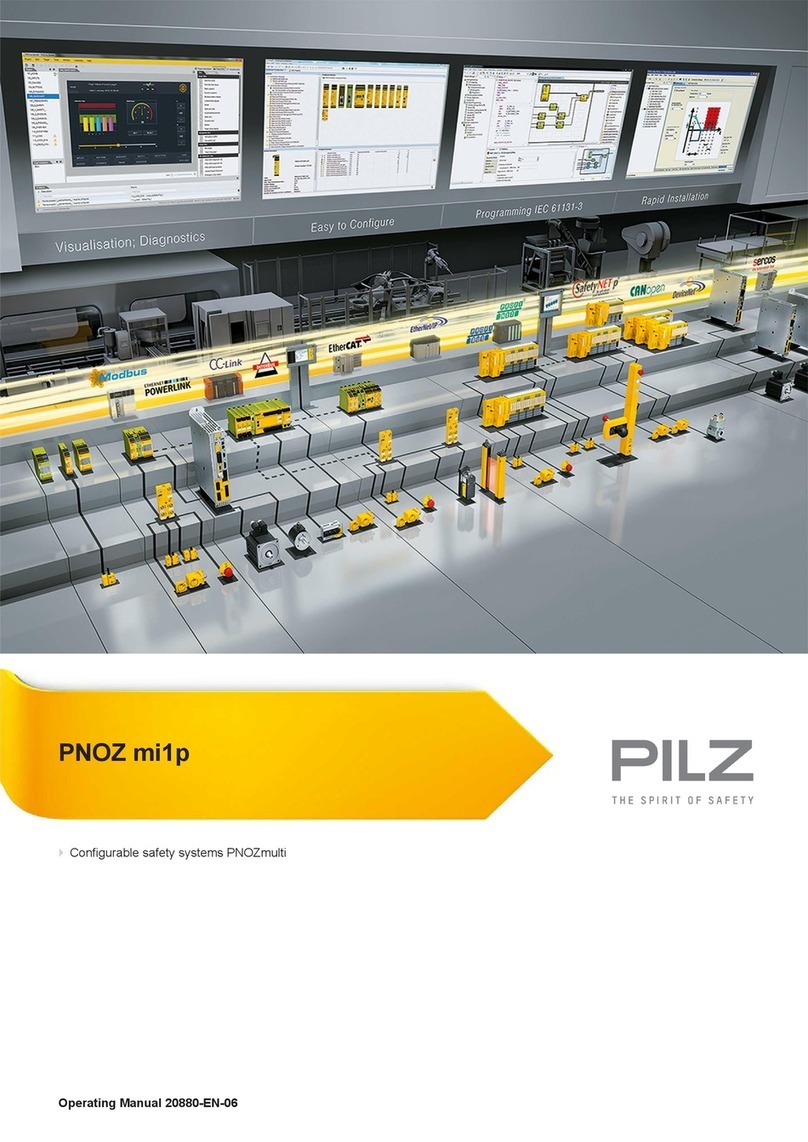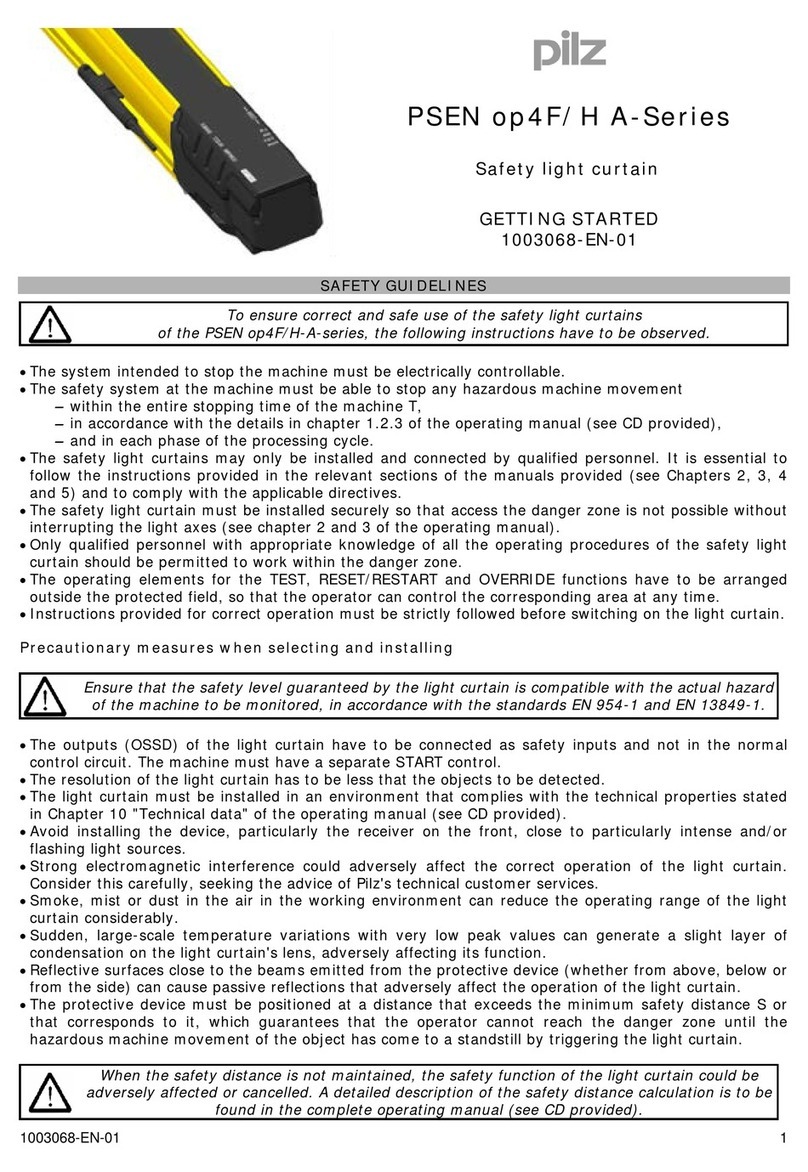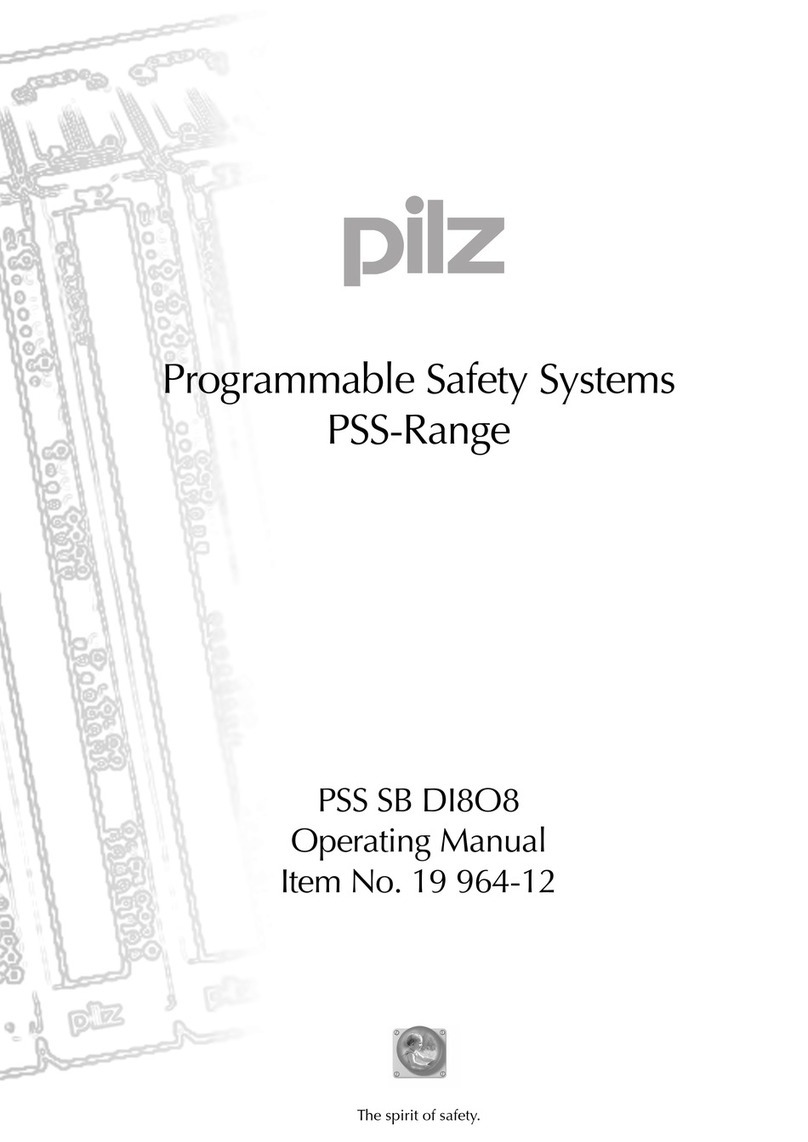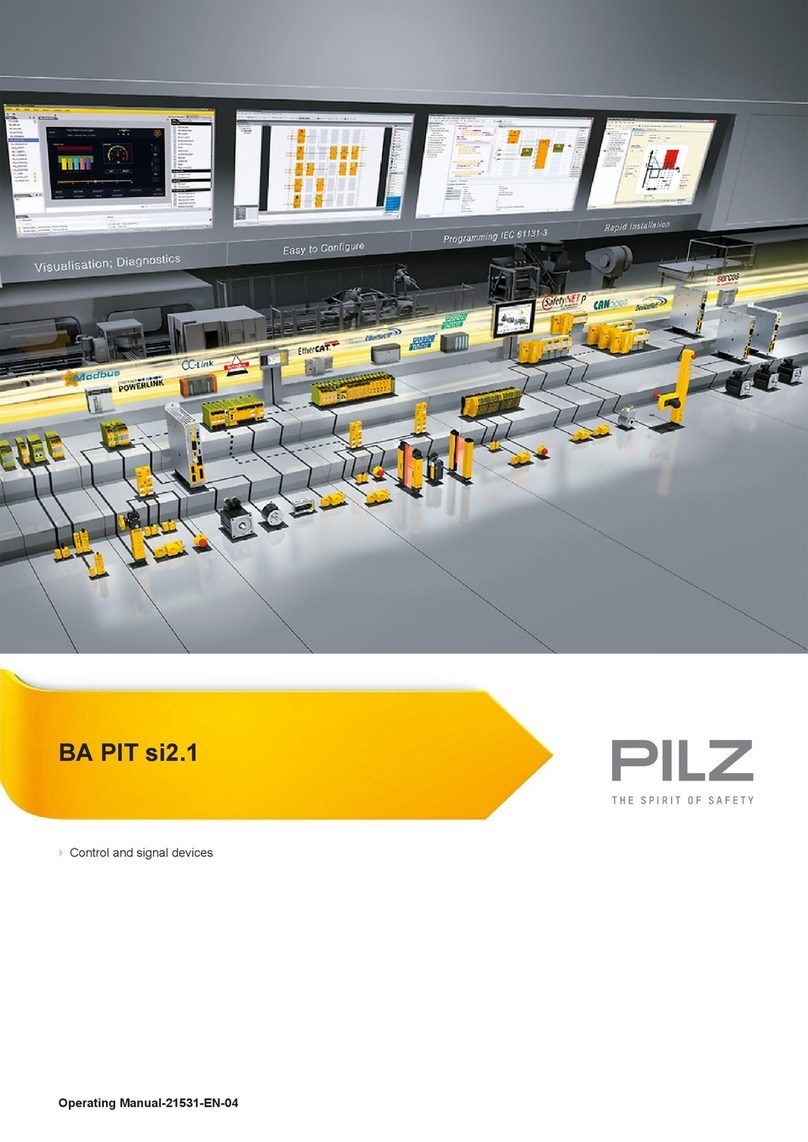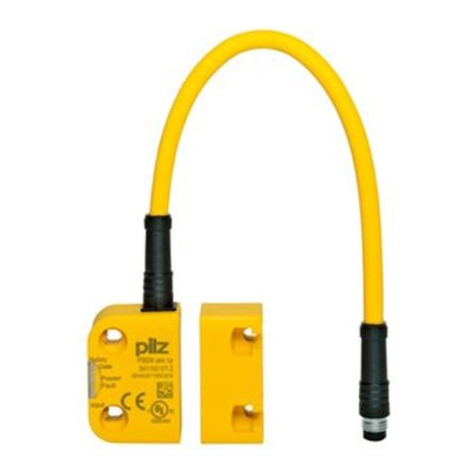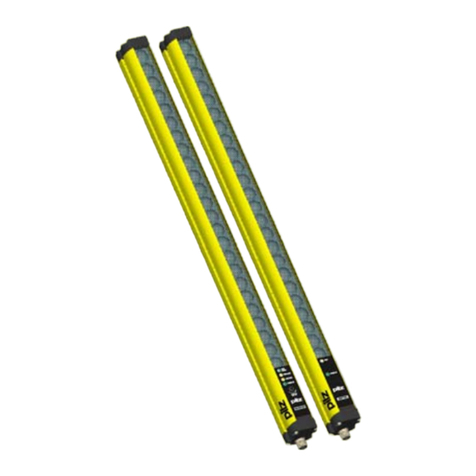INDEX
1. GENERAL INFORMATION ........................................................................................1
1.1. General description of the safety light curtains...................................................1
1.1.1. Package contents .................................................................................3
1.2. New features compared to the PSEN op2H Series............................................3
1.3. How to choose the device..................................................................................4
1.3.1. Resolution.............................................................................................4
1.3.2. Controlled height...................................................................................5
1.3.3. Minimum installation distance................................................................6
1.4. Typical applications...........................................................................................9
1.5. Safety information............................................................................................11
2. INSTALLATION MODE............................................................................................12
2.1. Precautions to be observed for the choice and installation of the device.........12
2.2. General information on device positioning.......................................................13
2.2.1. Minimum installation distance..............................................................14
2.2.2. Minimum distance from reflecting surfaces..........................................15
2.2.3. Emitter and receiver orientation...........................................................17
2.2.4. Installation of several adjacent safety light curtains.............................18
2.2.5. Use of deviating mirrors ......................................................................19
2.2.6. Controls after first installation..............................................................20
3. MECHANICAL MOUNTING .....................................................................................22
4. ELECTRICAL CONNECTIONS................................................................................25
4.1. Notes on connections......................................................................................26
4.2. Earth connection .............................................................................................29
5. ALIGNMENT PROCEDURE.....................................................................................30
5.1. Correct alignment procedure ...........................................................................32
6. FUNCTIONING MODE .............................................................................................33
6.1. Reset mode.....................................................................................................33
6.2. Test function....................................................................................................33
6.3. Reset function .................................................................................................34
7. DIAGNOSTIC FUNCTIONS......................................................................................35
7.1. User interface..................................................................................................35
7.2. Diagnostic messages ......................................................................................36
8. PERIODICAL CHECKS............................................................................................38
8.1. General information and useful data................................................................39
9. DEVICE MAINTENANCE.........................................................................................40
9.1. Product disposal..............................................................................................40
10. TECHNICAL DATA..................................................................................................41
11. LIST OF AVAILABLE MODELS...............................................................................42
12. OVERALL DIMENSIONS.........................................................................................43
13. OUTFIT ....................................................................................................................44
14. ACCESSORIES........................................................................................................45
14.1 Angled fixing bracket mounting........................................................................46
15. GLOSSARY .............................................................................................................50
